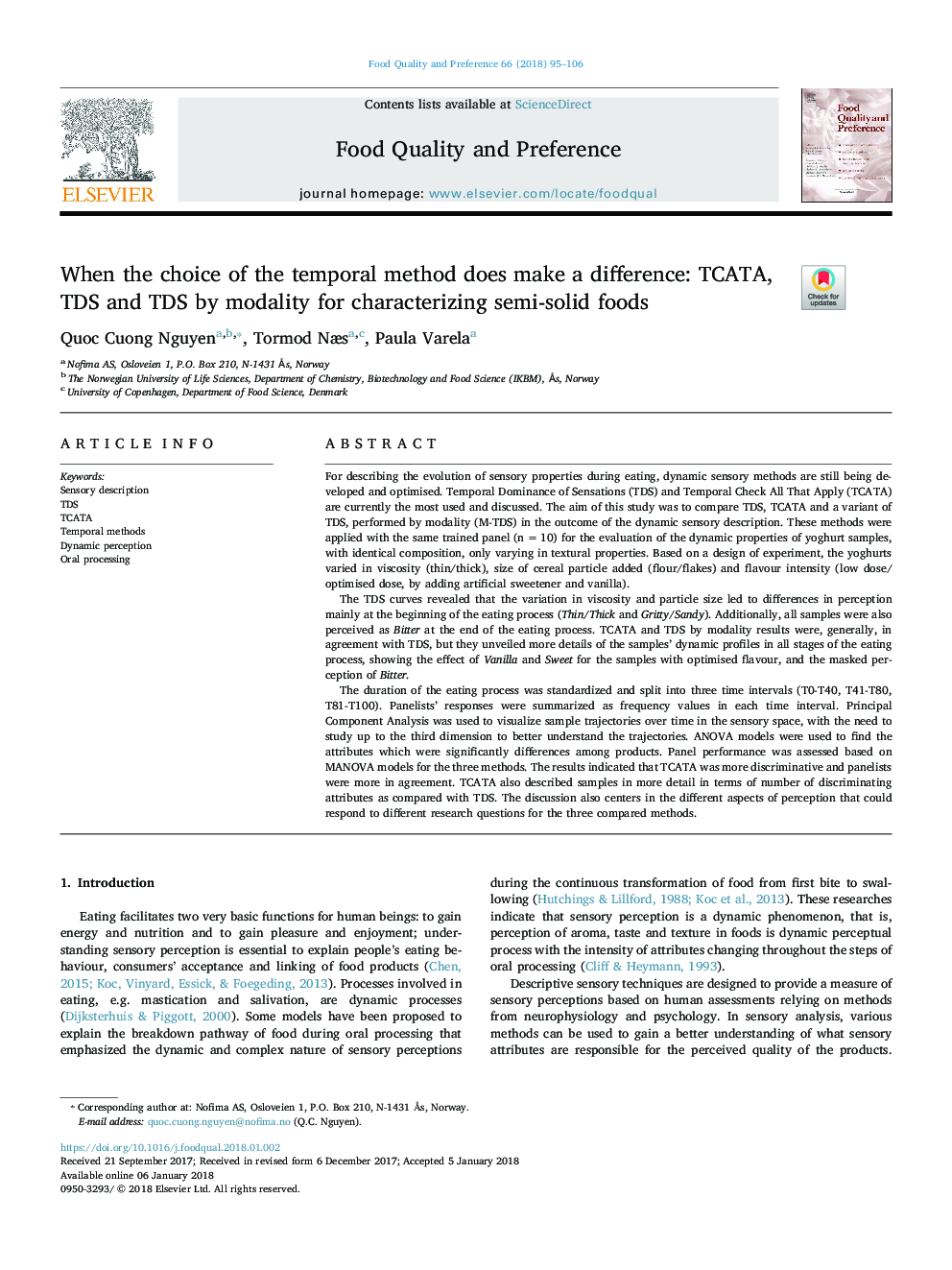| Article ID | Journal | Published Year | Pages | File Type |
|---|---|---|---|---|
| 8838522 | Food Quality and Preference | 2018 | 12 Pages |
Abstract
The duration of the eating process was standardized and split into three time intervals (T0-T40, T41-T80, T81-T100). Panelists' responses were summarized as frequency values in each time interval. Principal Component Analysis was used to visualize sample trajectories over time in the sensory space, with the need to study up to the third dimension to better understand the trajectories. ANOVA models were used to find the attributes which were significantly differences among products. Panel performance was assessed based on MANOVA models for the three methods. The results indicated that TCATA was more discriminative and panelists were more in agreement. TCATA also described samples in more detail in terms of number of discriminating attributes as compared with TDS. The discussion also centers in the different aspects of perception that could respond to different research questions for the three compared methods.
Related Topics
Life Sciences
Agricultural and Biological Sciences
Food Science
Authors
Quoc Cuong Nguyen, Tormod Næs, Paula Varela,
